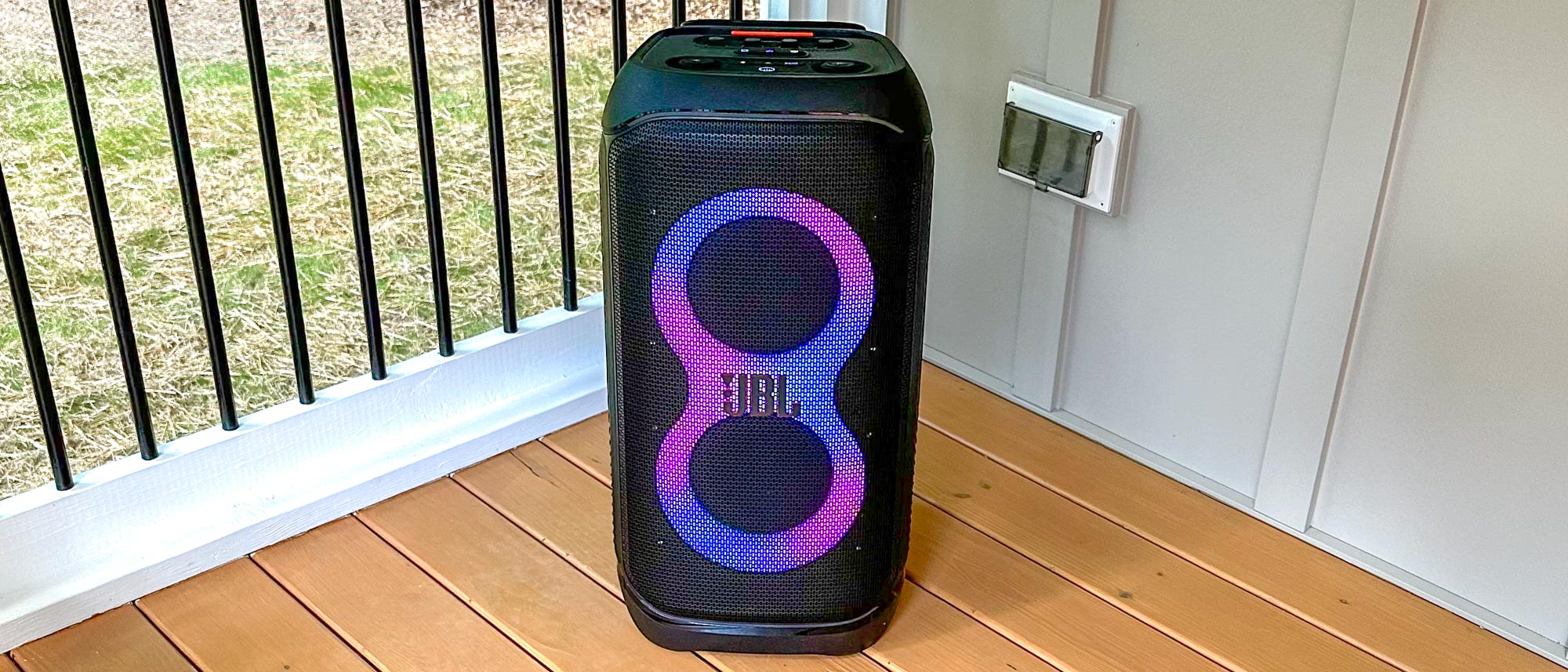Tom's Guide Verdict
The JBL PartyBox Stage 320 sounds very good and has tons of extras to entertain a crowd. It belts out bass without sacrificing vocals. It's big and heavy, and while it’s not for everyone, it does its job well.
Pros
- +
Booming bass
- +
Gets very loud
- +
Fun extras like lights and sound effects
Cons
- -
Large and heavy
- -
App can be slow
Why you can trust Tom's Guide
Price: $599 / £529
Colors: Black
Battery life (rated): 18 hours
Connectivity: Bluetooth 5.4 with Auracast support
Inputs: 2x ¼-inch jacks, 3.5mm aux input and USB-A port
Power output: 240W total
Durability: IPX4
Size: 26.3 x 15.2 x 13.2 inches
Weight: 41.7 pounds
If you want to be a DJ, or just like to entertain large groups, the JBL PartyBox Stage 320 will make your job easier. Rarely has a product’s name so accurately described it: The PartyBox Stage 320 really is like having a party in a box.
With flashing lights, sound effects and connections for microphones and a guitar, the JBL PartyBox Stage 320 has more to offer than many of the best Bluetooth speakers. It's clearly designed to be the center of any party. It goes loud and generates deep bass, all while producing very good overall sound. Although only a mid-range model in JBL's PartyBox series, the Stage 320 is big and heavy, and the high price means that it won't be for everyone.
Read my full JBL PartyBox Stage 320 review to see if you should add this powerful Bluetooth speaker to your party set up.
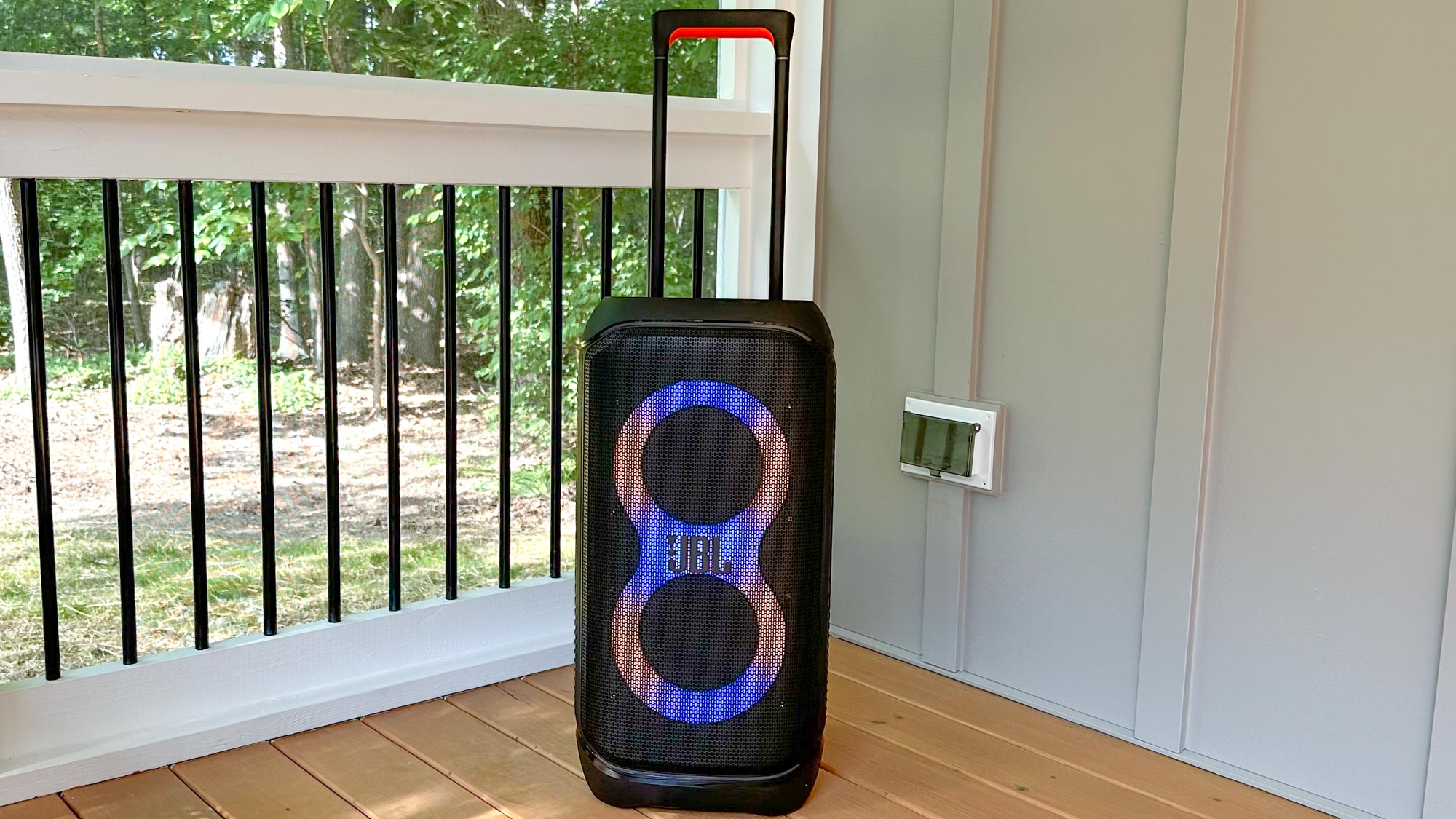
JBL PartyBox Stage 320 review: Price & availability
- On sale now priced at $599 / £529
- Available in black only
The JBL PartyBox Stage 320 costs $599 / £529. At the time of writing, the JBL PartyBox 320 wasn't available in Australia, but we'll update this section when we get information about its release there.
For U.S. and U.K. residents, it's available to buy at jbl.com as well as via online retailers including Amazon and Best Buy.
If you’re looking for a smaller party-style speaker, the JBL PartyBox Club 120 looks similar but has a smaller footprint and costs $399 / £349.
JBL PartyBox Stage 320 review: Design
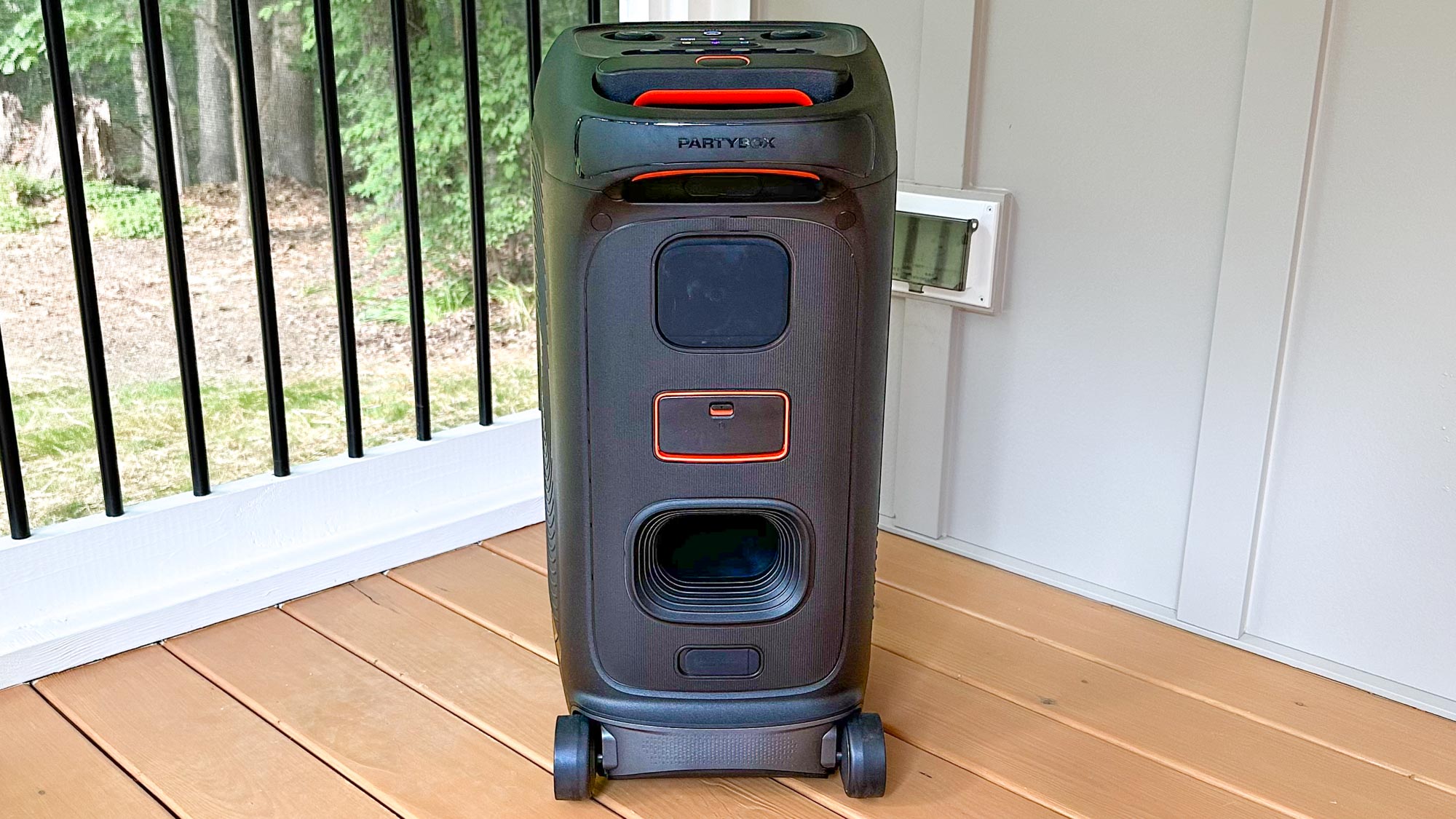
- The wheelie speaker cabinet weighs nearly 42 pounds
- Protected to IPX4 for water splashes only
The PartyBox Stage 320 is big in every way. It’s technically portable because it can run on battery power. But at 26.3 x 15.2 x 13.2 inches and 41.7 pounds, you’ll be glad JBL put wheels and a handle on it.
Inside its hard black plastic shell, two 1-inch tweeters and two 6-inch woofers bring the noise. LED lights encircled the woofers, and there are LED strips at the top and bottom of the speakers; additional lights for “starry” effects line the sides, next to the woofers.
On the back there’s a panel that covers a variety of input options. Below the panel is a removable battery, a large bass port and the power cord.
The speaker is rated IPX4 for ruggedness. That means it's splashproof, not waterproof. So don't take let it get caught in a rain shower and avoid using it close to a pool.
JBL PartyBox Stage 320 review: Controls and connectivity
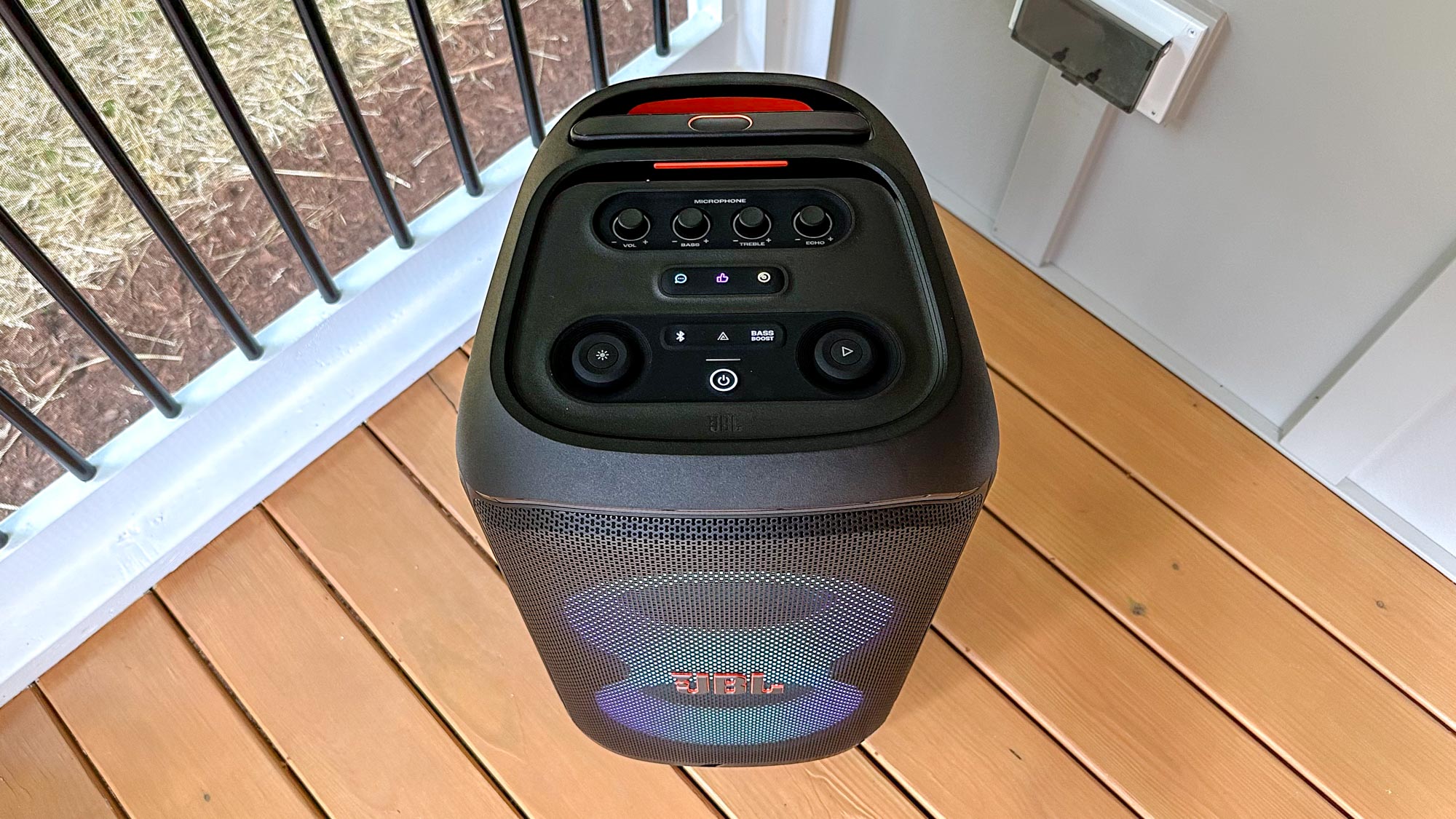
- Good selection of physical controls on the speaker and strong control app support
- Two ¼-inch jacks for mic and guitar hookups
The JBL PartyBox Stage 320 can do a lot of things, so there are a lot of controls and connections.
On top of the speaker, a multifunction dial controls volume and playback, and another dial operates the lights — you can select from several patterns or turn the lights off. Other controls on the unit include power, BassBoost, Bluetooth and a way to connect multiple PartyBox Stage 320s together. Three “party” buttons play recorded messages like “Let’s party!” or make record-scratching sounds.
Behind a panel on the back, there are two ¼-inch jacks, to which you can connect two microphones or a microphone and a guitar for karaoke. If you plug a microphone or guitar into the panel on the back of the speaker, it enables additional controls on the top. There’s also a 3.5mm auxiliary input and USB-A port, which you can use to charge your phone. The speaker can connect wirelessly through Bluetooth (version 5.4) and can connect to multiple JBL Auracast-enabled speakers with zero latency.
The free JBL PartyBox app offers the same controls and more. The app is slow to load, but once it does it works well. You can use it to customize what the “party” buttons play and change the options for the light show dial. There’s also an equalizer and an Effects Lab that lets you apply effects to the music, such as repeating the previous seconds of music or applying an echo. You really can be a DJ when using this app.
JBL PartyBox Stage 320 review: Sound quality
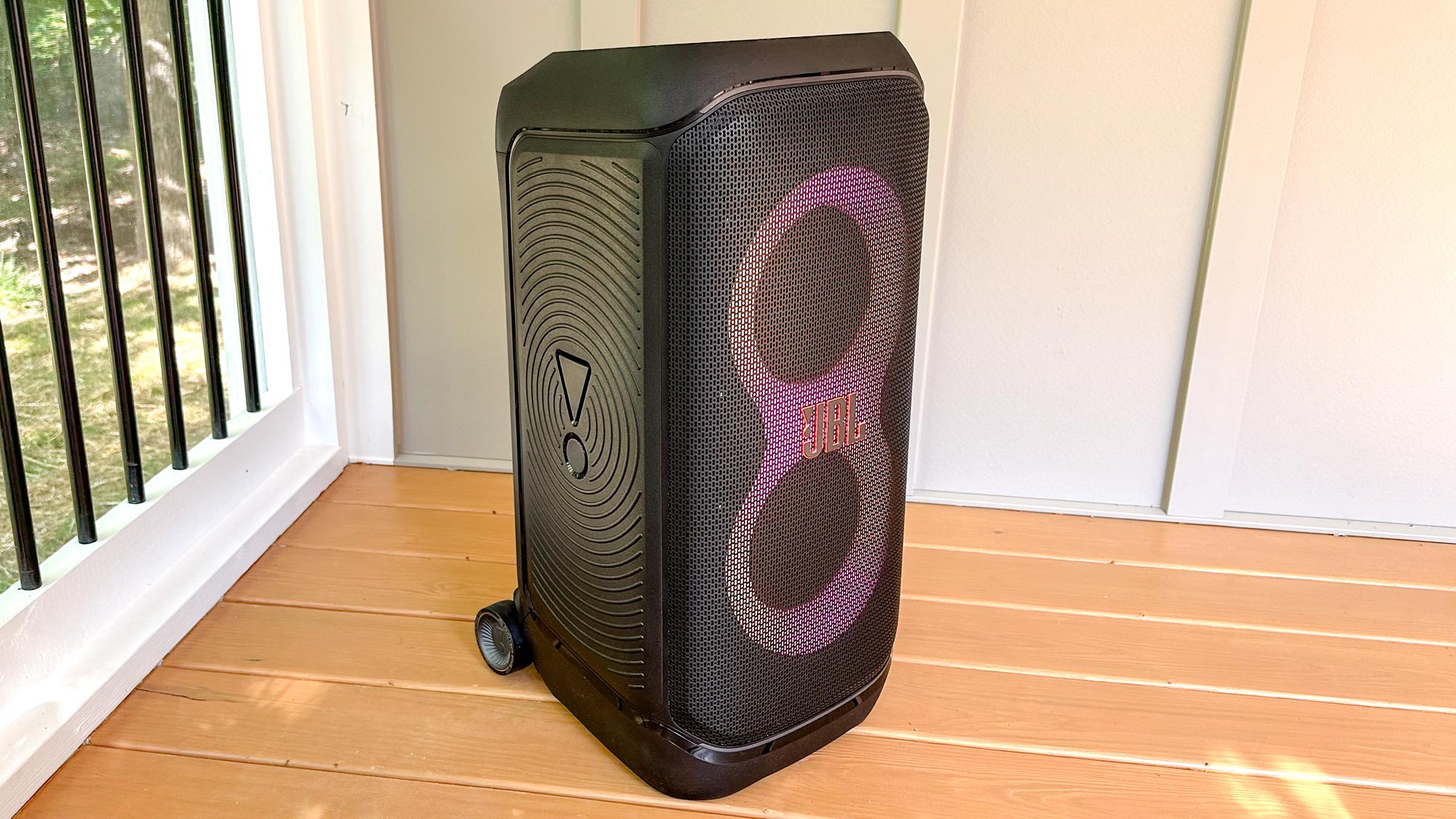
- Good bass levels
- Sound gets harsh at high levels
The PartyBox Stage 320 sounds very good overall. Vocals are clear and the treble is crisp but not harsh. But at any big party, bass draws people to the dance floor, and the PartyBox Stage 320 shines at that, generating floor-rumbling low-end with good detail.
I could feel the thumping drums on St. Vincent’s “Broken Man” as the speaker pushed the air, and her vocals were still clear in the mix. Similarly on Brittany Howard’s “What Now,” the bass sounded huge while the guitars and vocals were clear. On Kendrick Lamar’s “Euphoria” the droning bass vibrated the floor without covering up his disses.
The speaker has range, too, handling a variety of music well. Miles Davis’s trumpet on “‘Round Midnight” had warmth, while the picked acoustic guitar on Fleetwood Mac’s “Never Going Back Again” sounded crisp and without being too bright.
The PartyBox Stage 320 gets loud enough to fill a house or overcome a noisy crowd, maxing out at about 100 decibels. At top volume the sound gets harsh, however.
JBL PartyBox Stage 320 review: Battery life
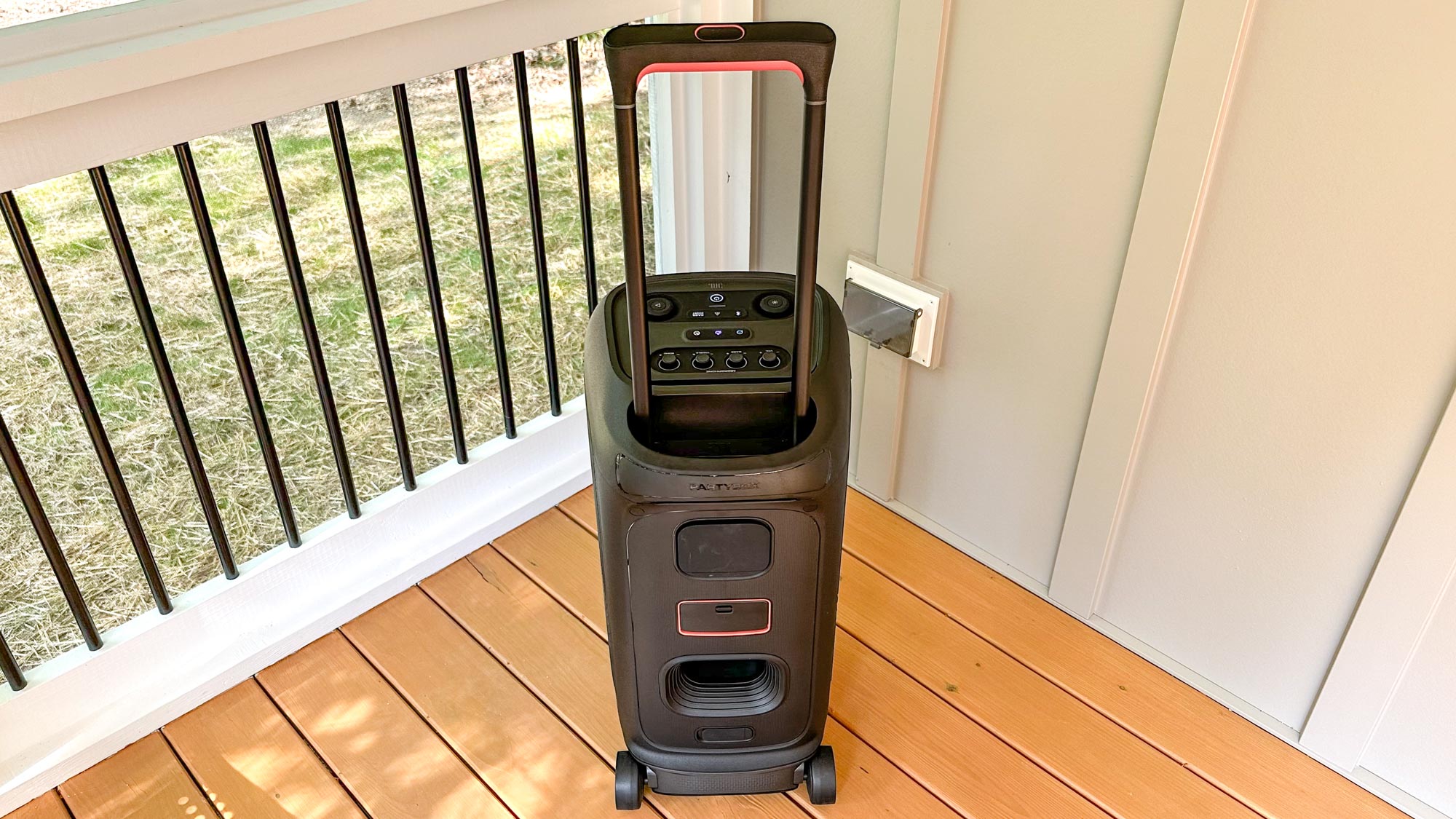
- Battery life rated to 18 hours
- 3-hour full recharge time
JBL says the battery will last for about 18 hours on a full charge. After listening for 5 hours at moderate volume, with the lights going, it had about 75% left — in line with JBL’s estimates. If you turn it up loud, the battery will probably drain more quickly. It takes 3 hours to charge it fully.
JBL PartyBox Stage 320 review: Verdict
The PartyBox Stage 320 is a fun speaker. It sounds very good, producing deep bass without getting muddled. It’s loud enough to be heard over a crowd. And it has lots of lights and effects tricks to keep everyone entertained.
Do you need it? Probably not. It’s kind of like a boat or a pool: you don’t need to own one, you just need to know someone who does. Unless you’re an actual DJ or host a lot of big parties, the PartyBox Stage 320 is likely overkill. The JBL PartyBox Club 120 offers many of the same fun features in a more reasonably sized and priced package. JBL’s Boombox 3 also costs less than the PartyBox Stage 320 and is definitely easier to tote around, though it lacks “party” features.
But if being the life of the party is your goal, having the PartyBox Stage 320 will definitely level up your entertainment abilities.

Michael Gowan is a freelance technology journalist covering soundbars, TVs, and wireless speakers of all kinds of shapes and sizes for Tom’s Guide. He has written hundreds of product reviews, focusing on sound quality and value to help shoppers make informed buying decisions. Micheal has written about music and consumer technology for more than 25 years. His work has appeared in publications including CNN, Wired, Men’s Journal, PC World and Macworld. When Michael’s not reviewing speakers, he’s probably listening to one anyway.
